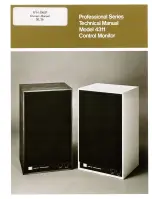
ii
Turn the transceiver power off in the following locations:
•
In explosive atmospheres (infl ammable gas, dust particles, metallic
powders, grain powders, etc.).
•
While taking on fuel or while parked at gasoline service stations.
•
Near explosives or blasting sites.
•
In aircraft. (Any use of the transceiver must follow the instructions
and regulations provided by the airline crew.)
•
Where restrictions or warnings are posted regarding the use of
radio devices, including but not limited to medical facilities.
•
Near persons using pacemakers.
PRECAUTIONS
• Do not charge the transceiver and battery pack when they are
wet.
• Ensure that there are no metallic items located between the
transceiver and the battery pack.
• Do not use options not specifi ed by
KENWOOD
.
• If the die-cast chassis or other transceiver part is damaged, do
not touch the damaged parts.
• If a headset or headphone is connected to the transceiver,
reduce the transceiver volume. Pay attention to the volume level
when turning the squelch off.
• Do not place the microphone cable around your neck while near
machinery that may catch the cable.
• Do not place the transceiver on unstable surfaces.
• Ensure that the end of the antenna does not touch your eyes.
• When the transceiver is used for transmission for many hours,
the radiator and chassis will become hot. Do not touch these
locations when replacing the battery pack.
• Do not immerse the transceiver in water.
• Always switch the transceiver power off before installing optional
accessories.
• The charger is the device that disconnects the unit from the AC
mains line. The AC plug should be readily accessible.







































